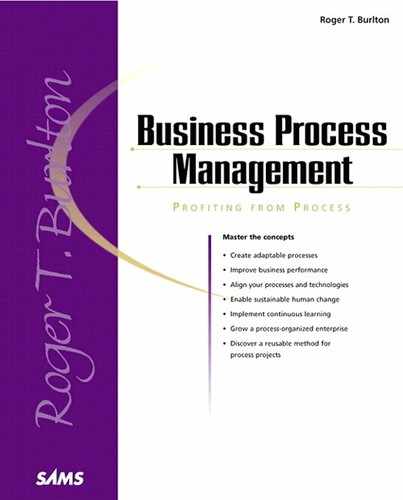Matching Processes to Criteria and Prioritizing
This step gathers existing process performance measurements, benchmarks that performance against similar processes in other organizations, and determines which processes will contribute the most toward the achievement of stakeholders’ criteria. The latter activity which processes hold the greatest opportunity for improvement. The ranking of processes for renewal begins at this point.
Techniques
The techniques for matching processes to the criteria established in the Business Context phase cross-reference process attributes to stakeholder requirements. My favorite technique is to use matrices that cross-reference the stakeholder criteria from the Business Context phase to the processes in the Identify Business Processes step in this phase.
Lessons Learned
Matching processes to criteria and prioritizing them can become very political, so it’s important to get as much factual supporting information as possible. When doing this, however, remember that existing performance measures can vary greatly depending on site location and measurement technique. Use these as a guide. Don’t get carried away. If you’ve done your homework in the previous phase and gained acceptance of proposed changes, you will find this phase much easier to execute.
Link processes to the reasons for their existence by starting with the business stakeholders’ requirements and their critical success factors. Then, examining each process in the architecture for both its degree of importance or potential contribution and its opportunity for performance improvement. Remember that some stakeholders might be weighted as more important than others but also be careful to ensure a fair balance of perspectives.
Use matrices to keep the analysis and presentation simple and to keep track of what has and has not been analyzed. Map the relative importance of the processes to the relative health of the processes in a Boston grid (a 2×2 matrix) to find groupings of process improvement priorities. Show the priorities for change in the top-right corners. Create three levels of priority grouping recommendations.
Consider redoing the exercise with varying weightings to discover the sensitivity of the analysis. If small weighting changes lead to wildly different results, significant risk is involved, and a revisiting of criteria might be warranted. If not, the resulting program of change should be easier to sell.
Review the outcomes of this step with management in a cross-functional workshop using management’s own previously stated, stakeholder-based criteria. Allow time for lobbying and communication because the result might exclude some people’s desired initiatives and include change for others who don’t want it.
